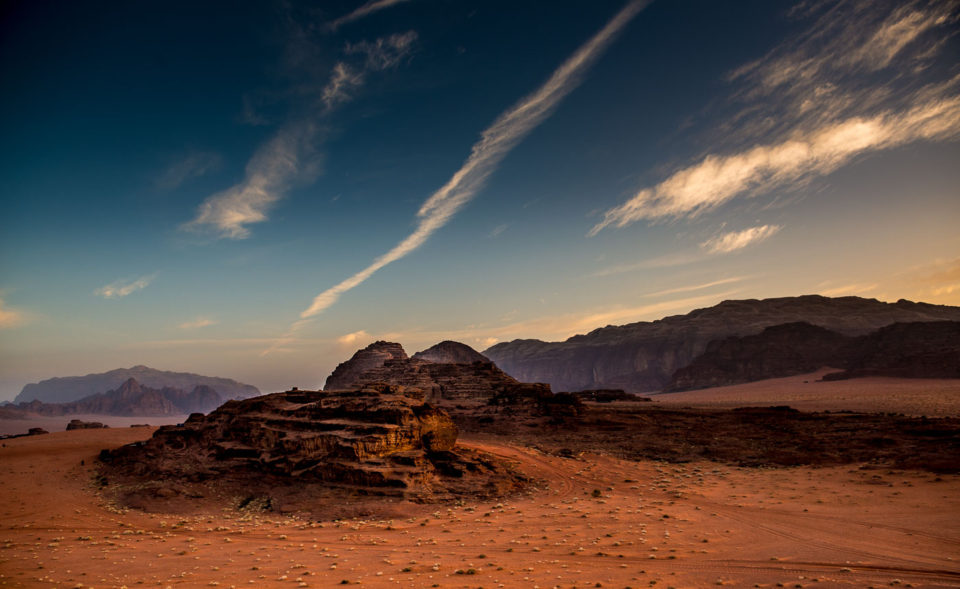
There are six UNESCO World Heritage sites in Jordan.
Here is a list of UNESCO World Heritage sites in Jordan, with links to posts about the sites we have visited.
Table of Contents
UNESCO Cultural Sites (4)
Petra (1985)
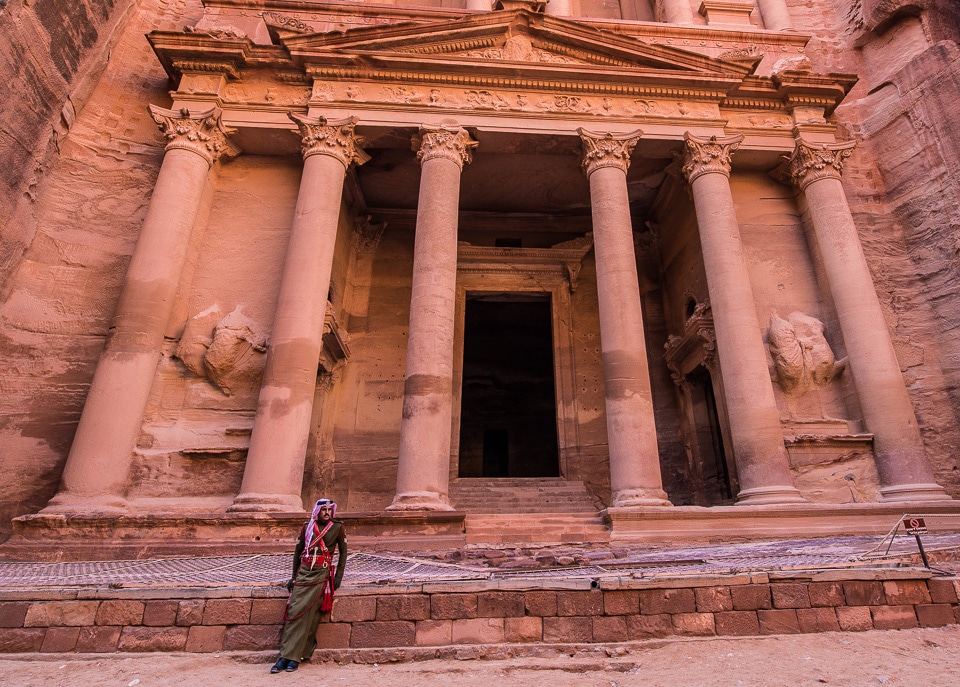
Like a lot of other people, the first I ever knew a place like Petra, Jordan existed was because of the Indiana Jones movie. And even then, I wasn't sure it hadn't been reconstructed on a back lot somewhere. But no, it's real. And it's a lot bigger than just the treasury building. (The so-called Treasury is actually a tomb.)
If you want to see Petra, bring really good walking shoes and be willing to spend somewhere around five hours gaping. The site is huge. You have to walk from the visitors' center about a 1.6 km (a mile) just to get to the Treasury, and then the rest of the way to the end of the city is another three or so kilometers. To see all Petra, expect to walk about 15 kilometers, which is just short of 10 miles.
Of course, if you want, the Bedouins who actually live in Petra will gladly sell you a ride on a camel, donkey, or even a horse-drawn cart, all or part of the way. There are signs though, that ask to you consider your own weight when you hire a donkey.
You might want to visit Petra in January, as we did. Here are two good reasons: it wasn't too hot to spend five hours under desert sun; and, there are relatively few tourists.
And, because there are only scores, instead of thousands, of tourists, you can actually get a photo of the signature “Treasury” building with only the costumed guard in front of it, instead of a dozen camels and 200 people with selfie sticks.
Of course, if you want that picture, you can get it too. At least the camels part. And maybe a couple of donkeys. And some tourists.
Petra is a site we visited for one day, but we could have spent three days there to see it all. It's much bigger than you were led to believe by watching Indiana Jones and the Last Crusade. We were especially disappointed that we hadn't bought multi-day passes to Petra. Don't make the same mistake. A one-day pass costs 50 Jordan Dinars ($70 USD) but each extra day is only an additional 5 Jordan Dinars ($7.) An adequate hotel in Petra village can be had for 40 Dinars, including breakfast, so it's worth the stay.
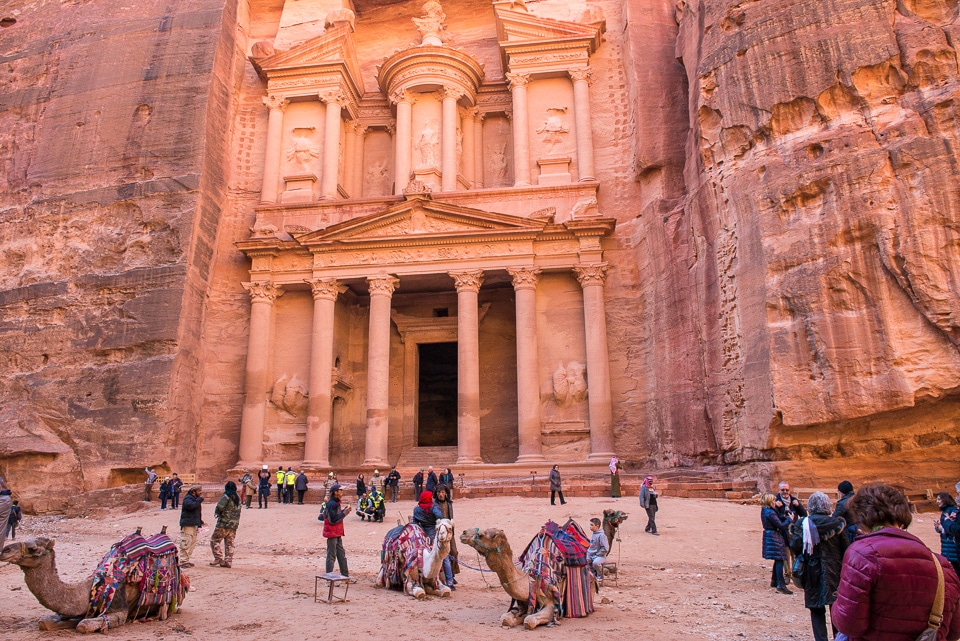
Quseir Amra (1985)
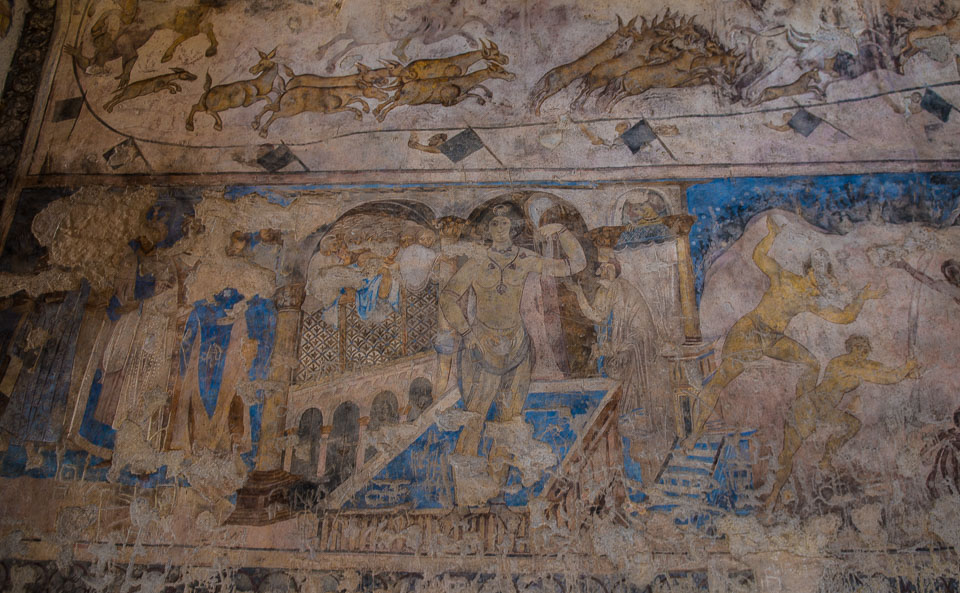
To get to Quseir Amra from Amman, you have to pass through Sahab, one of the most depressingly polluted urban suburbs you'll ever run across.
Once you clear Sahab, Quseir Amra is about 45 minutes down the highway into the eastern desert. The Quseir Amra site consists of an unprepossessing chunk of a stone building only about 150 meters off the road. From the outside, you have to wonder what distinguishes this small stout building. Evidently, there used to be an actual castle on the site, but no trace of that remains.
What does remain is a heavily frescoed small building that served as a hunting lodge – and a place he took his mistresses – for an 8th Century emir.
The frescoes are colorful and interesting, although they don't exhibit any overarching skill that distinguishes them from contemporaneous Byzantine work.
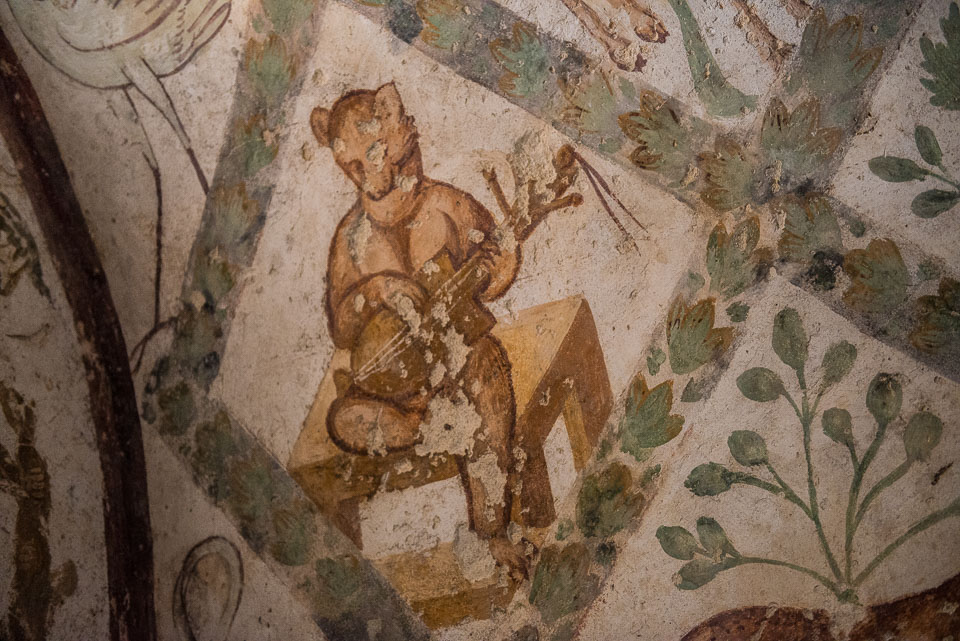
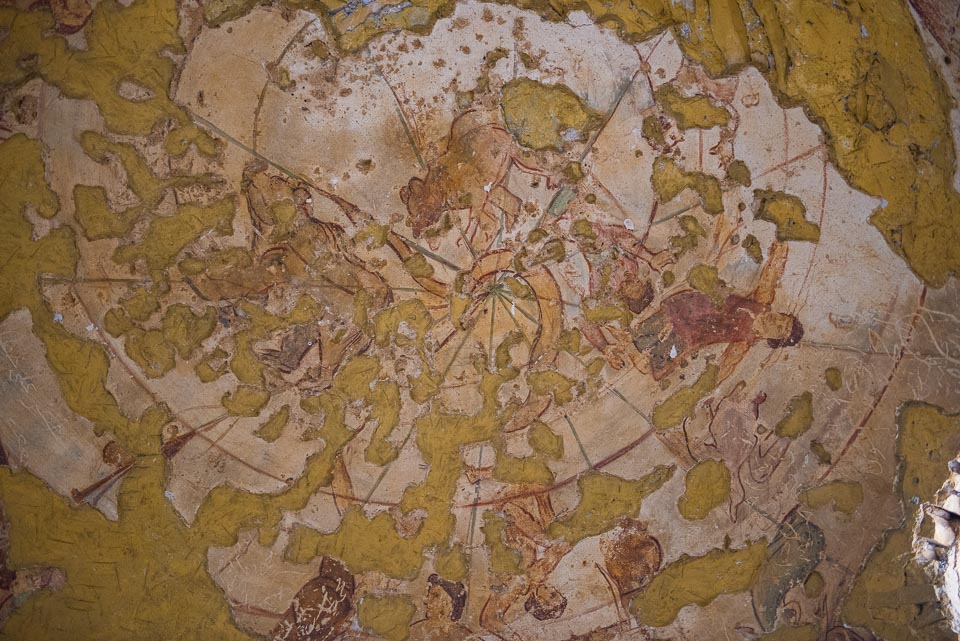
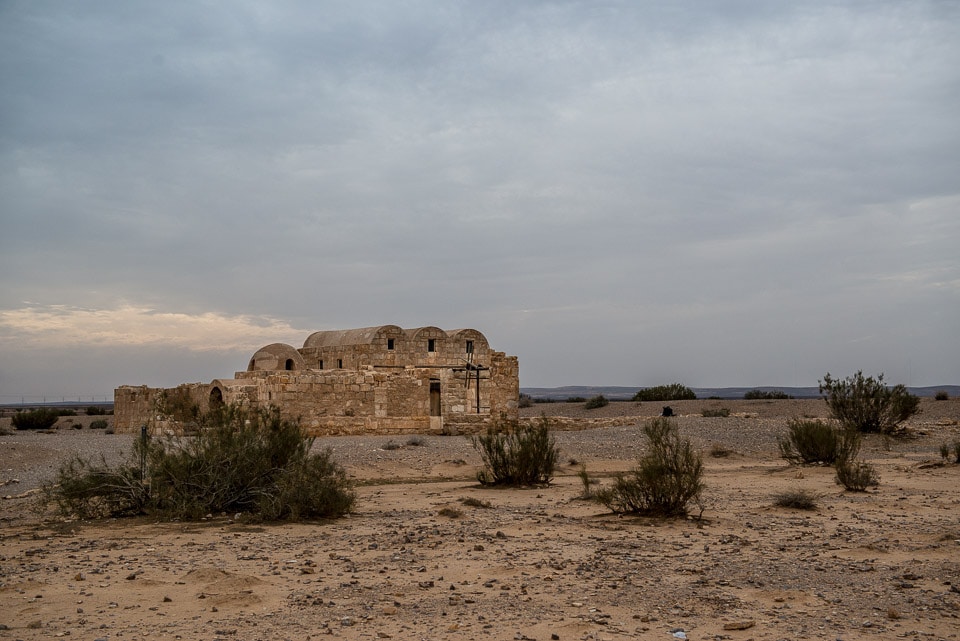
You can see Quseir Amra in about half an hour, which is less time than it takes to get there from Amman.
Um er-Rasas (Kastrom Mefa'a)(2004)
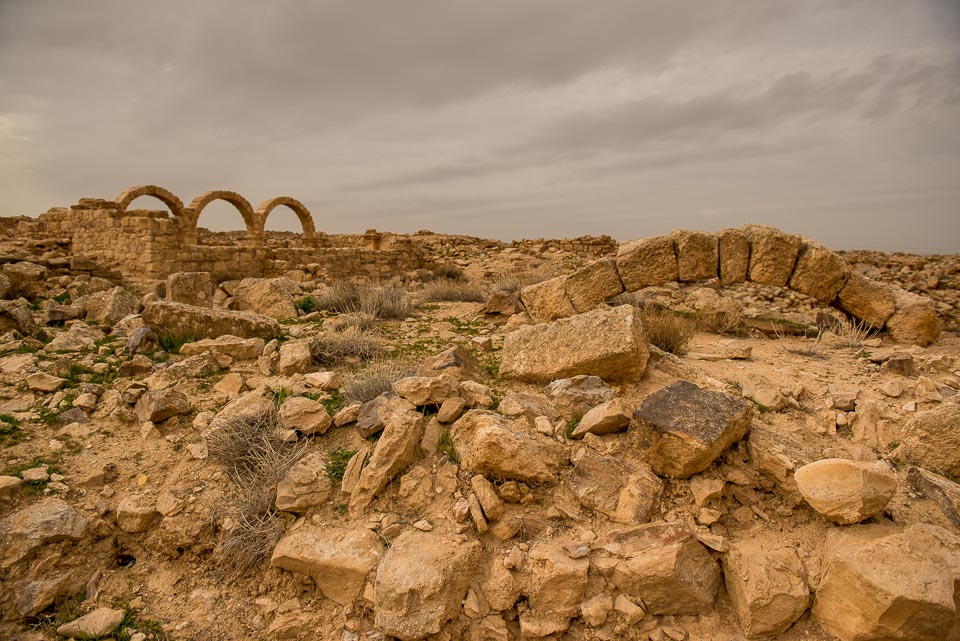
We were really looking forward to the Um er Rasas World Heritage site, which promised some cool stuff to look at, and much less touristy development. We were both delighted and disappointed.
First, the delight. You have to understand the large Um er Rasas site has barely been excavated. It started as a Roman military camp around the time of the Emperor Hadrian in the early 2nd Century, and developed into a large town that had 16 Byzantine churches of various sizes. So, what you are able to see is severely limited. But what is there is great.
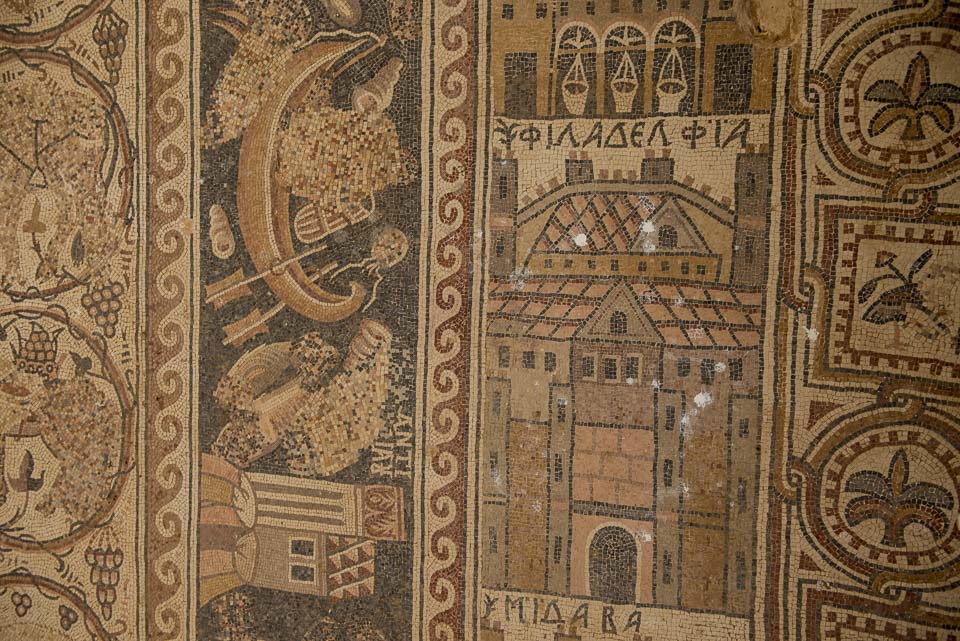
The large Saint Stephen’s Church is the highlight. It is the most developed part of the archeological park, and the only part that seems to enjoy any effective protection. Over the large nave and apse, they’ve built a steel roof to protect the fantastic mosaic floor from at least some of the elements. The floor is amazingly well preserved, with the vast majority of the original 6th Century mosaics mostly intact. I say “mostly” because the damage to the mosaics was not done by the elements or earthquakes, but by Muslim iconoclasts who, literally, defaced some of the illustrations. It looks, in some spots, that faces were removed both from human and animal figures and the mosaic pieces were rearranged in those areas to make pixelated nonsense out of the facial figures.
Of course, knowing what damage Christians did over the years to pagan icons, one can hardly fail to at least understand when Muslims did the same to the Christian figures.
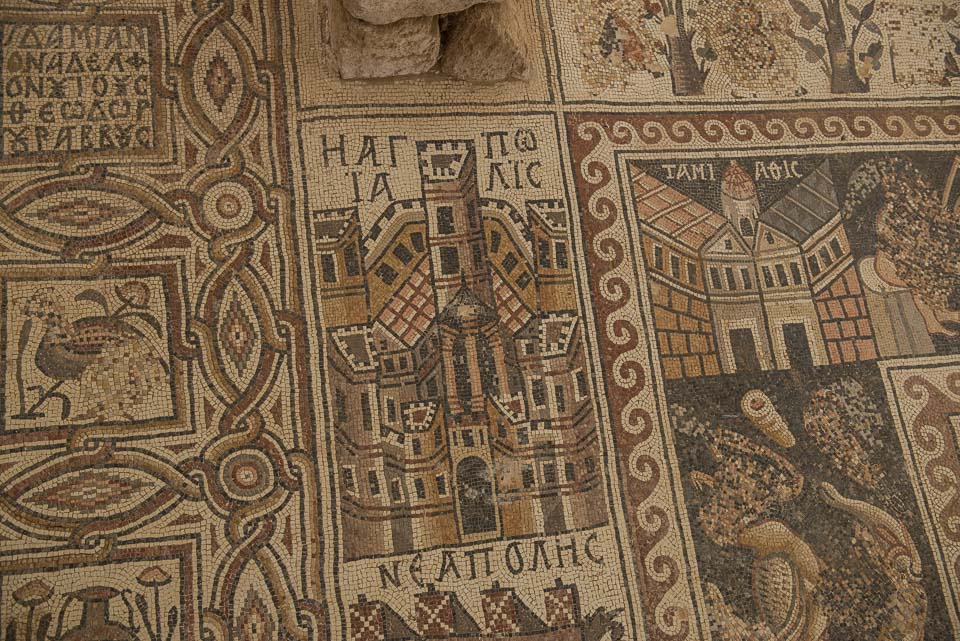
What remains, particularly of the Saint Stephen mosaic is remarkable though. My favorite elements of the design was a graphic depiction of all the cities of the surrounding area. Philadelphia, the ancient name of Amman, is there, as is Jerusalem, called simply the Hagia Polis, or Holy City. Ashkelon, the city on the Mediterranean coast of Israel is there, as are several other recognizable names–if you can read Greek.
Ironically, the only human damage (other than the above mentioned decapitations) I saw to the Saint Stephen's mosaics was done by one of the careless workmen who erected the protective roof. While the interior of the roof was being painted, it seems part of the mosaic was left uncovered. There are drips of white paint on the Philadelphia tableau. I looked up at the ceiling above, and yes, you could see the runs of white on the metal truss. It’s hard to get good help.
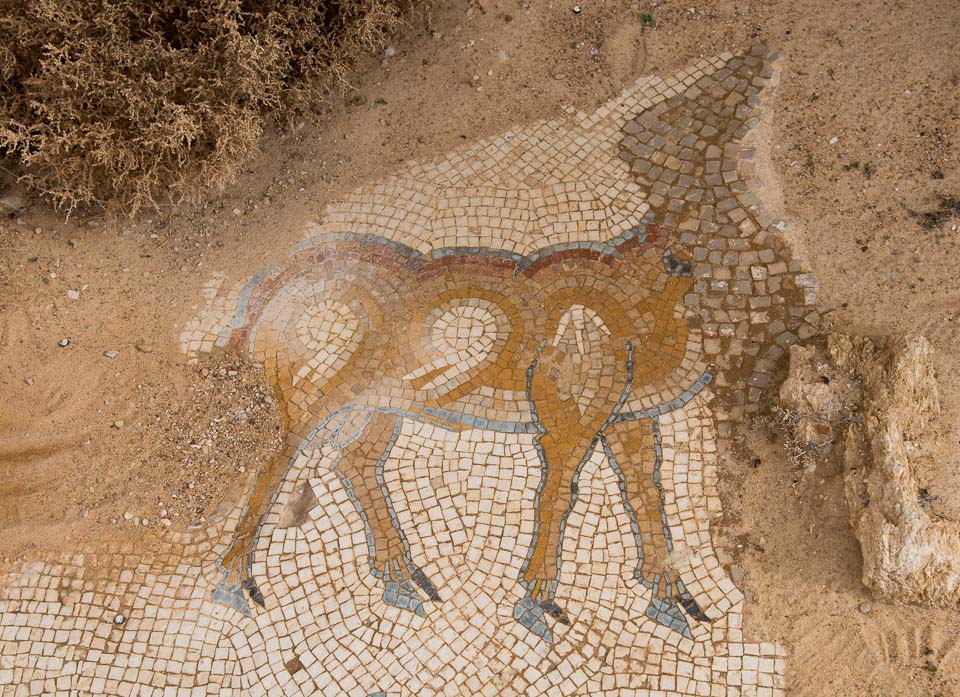
As you wander the huge site, climbing among the toppled stones, you run into many of the other churches and see bits of more lovely mosaics that decorated their floors as well. Unfortunately, there is no protection for them other than the sand which has blown and settled into the church wall enclosures. You can walk into those churches and kick sand aside to uncover the art beneath. But you have to wonder how long these treasures will last if nothing is done to preserve them.
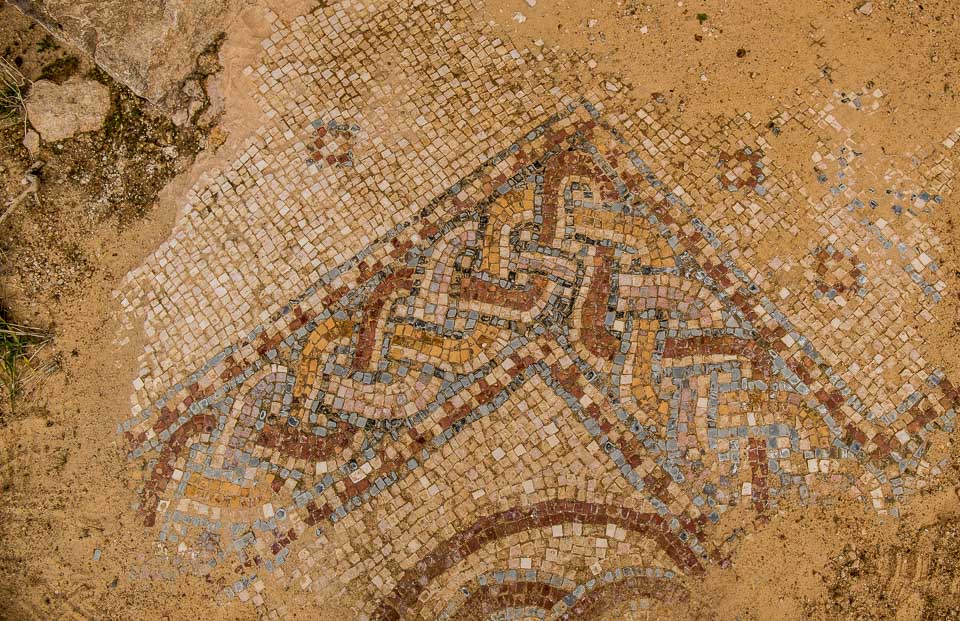
And, nothing is being done to either protect or preserve them. When we arrived at Um er Rasas, there was a nice visitors center–or at least something that once had been built as a visitors center. There was only one man working there. He was doing a survey of visitors and asked us two questions: where did you come from (Wadi Rum) and where are you going next (Quseir Amra.) He told us entry was free, because nobody was working to sell us a ticket. After the cost of Petra, I figured we deserved a discount anyway. Although we arrived in early afternoon, I surmised we were the first visitors of the day, because our answers were written on the first line of his form. We were completely alone on the site.
I suppose one can understand what is happening to sites like this in Jordan. It is a relatively remote site in the north of the country. Both Petra and Wadi Rum are in the south, and both are easily accessible by car from Eilat, Israel. And many tourists do visit one or both sites and return to Eilat the same day.
As-Salt: The Place of Tolerance and Urban Hospitality
We have not visited the As-Salt site. Built on three closely-spaced hills in the Balqa highland of west-central Jordan, the city of As-Salt, was an important trading link between the eastern desert and the west. During the last 60 years of the Ottoman period, the region prospered from the arrival and settlement of merchants from Nablus, Syria, and Lebanon who made their fortunes in trade, banking, and farming.
Baptism Site “Bethany Beyond the Jordan” (Al-Maghtas) (2015)
We have not visited Baptism site. “Bethany beyond the Jordan” is of immense religious significance to the majority of denominations of Christian faith, who have accepted this site as the location where Jesus of Nazareth was baptized by John the Baptist.
UNESCO Mixed sites(1)
Wadi Rum Protected Area(2011)
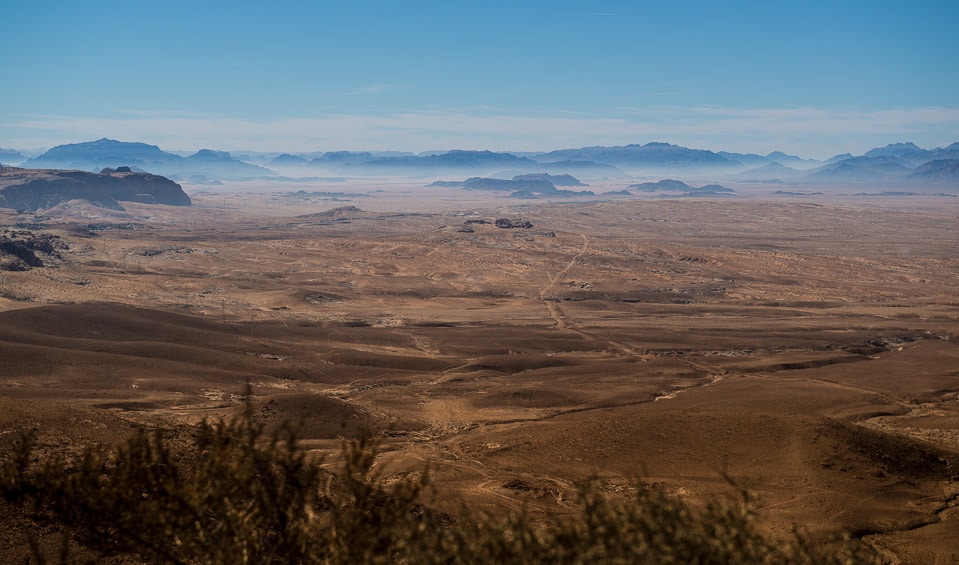
We were driving early morning from Petra to Wadi Rum on Jordan's main north south highway. I noticed the mist on the mountains in the distance and asked our driver what we were looking at. “That's where we're going,” she said. “That's Wadi Rum.”
Wadi Rum means Valley of the Moon in Arabic, and this indeed could be a moonscape, although probably not our moon. Maybe some mythical moon, or one of the gaseous moons of Jupiter. Because, after all, this is the Arabian desert, and that doesn't usually bring the words mist or humidity to mind.
But it was January, and it was pretty early in the morning still, so there was a little moisture in the air. It even snowed in the high parts of the Jordanian mountains two weeks ago. So, I guess anything is possible.
We were anxious to start our Wadi Rum tour.
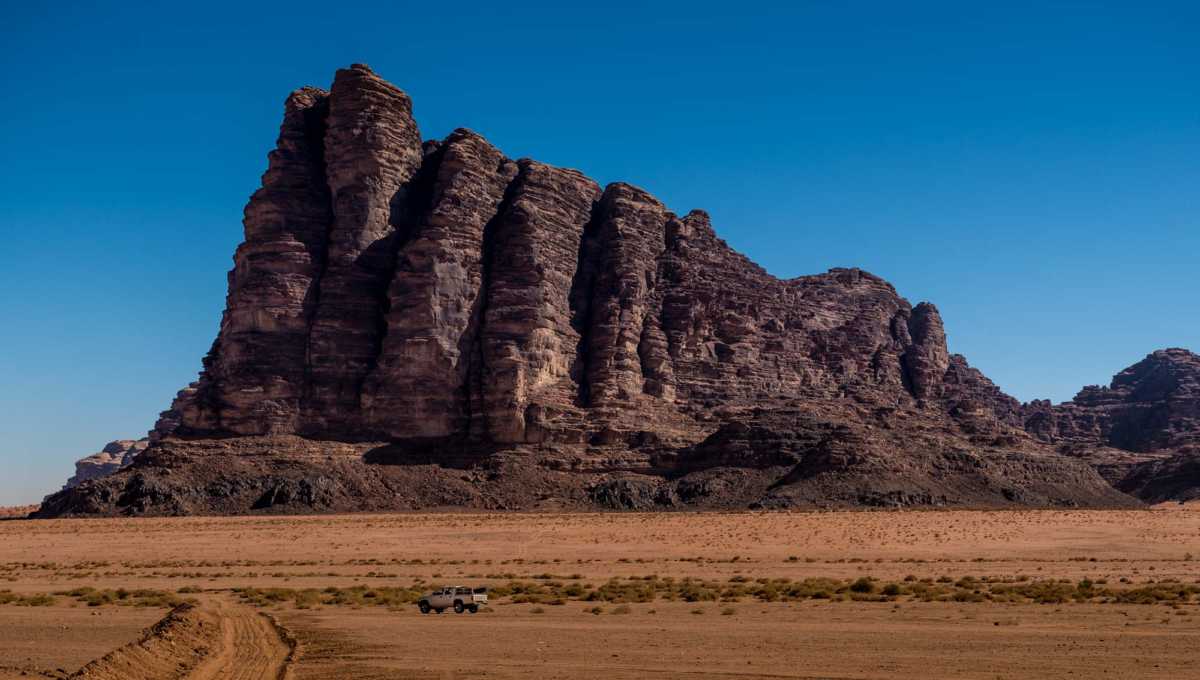
T.E. Lawrence, the famous Lawrence of Arabia wrote a book about his experience in his World War I campaign with the Arabs called Seven Pillars of Wisdom.
This rock formation took its name from that book. It's in Wadi Rum, where Lawrence passed and camped many times during the campaign. Wadi Rum is also where much of the film, Lawrence of Arabia, was filmed. Wadi Rum also recently served as the stand-in for Mars in the film The Martian.
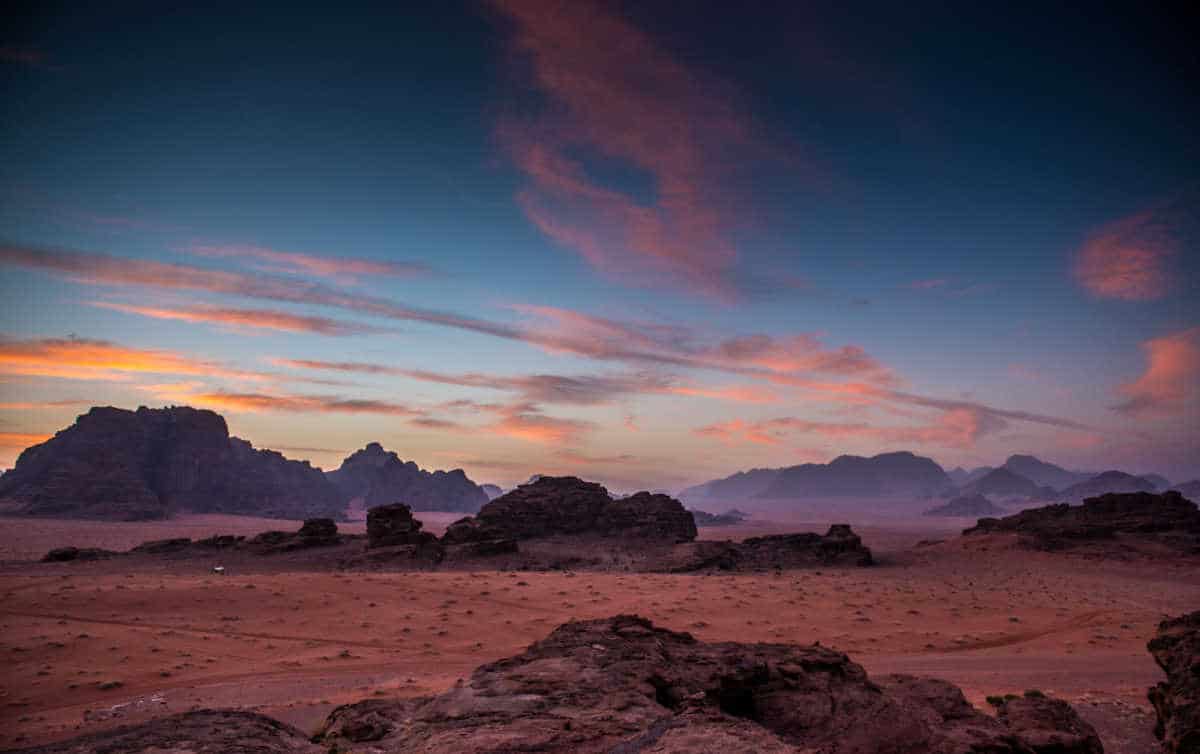
When it comes to color and natural beauty it's hard to beat mountains and desert. When you have both, such as in Wadi Rum, Jordan–and when I get up before dawn to shoot them–you have a combo that's hard to beat. Wadi Rum is spectacular for many reasons. It's so beautiful, and stark at the same time. One of the most impressive features is the predominance of iron oxide, rust, in the mountains, which turns a lot of the landscape red. There are parts of the desert which do not have this rust, and in certain spots you can see the ground change from red to white along a clearly delineated line.
This and the shot below were the direct results of staying overnight at a Bedouin camp in Wadi Rum. The Bedouins have exclusive rights to accommodation in Wadi Rum, so you can only do it with their permission. Various families have Wadi Rum camps where you can stay, and those families also have the four wheel vehicles that will ferry you around the desert.
The Bedouin camp hospitality is legendary, of course, and our stay at the camp, despite the total language barrier, was a delight. A desert cooked dinner, sweet tea and honeyed pastries for desert, and early to bed to await the dawn.
It was a particularly soft dawn over the red sands of Wadi Rum. Often you'll get the long shadows of low light at dawn. But the early sun was still behind the mountains, and so just infused the scene with a delicate glow without pouring down so hard as to cause harsh shadows.
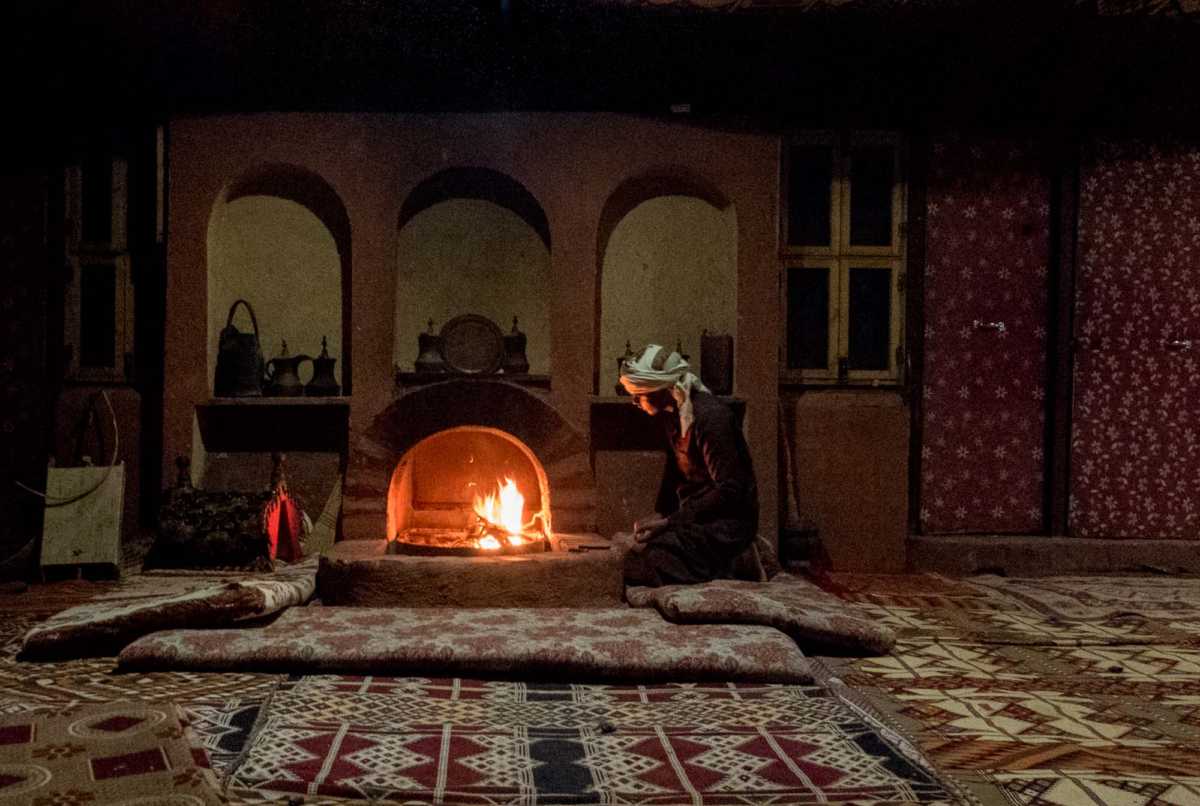
The Bedouin encampment in Wadi Rum was a tent setup that was more permanent than a usual Bedouin outpost, there were metal frames to the tents, and the “dinner” tent had a stone fireplace to warm the large space. Of course, in the desert, there's not much wood, and this man made this fire out of one small branch from a dry tree.
But the tent walls are made of goat hair carpets, as is the ceiling. And that is some fantastic insulation. The chill of the desert night, which was near freezing, was subdued even by this small fire.
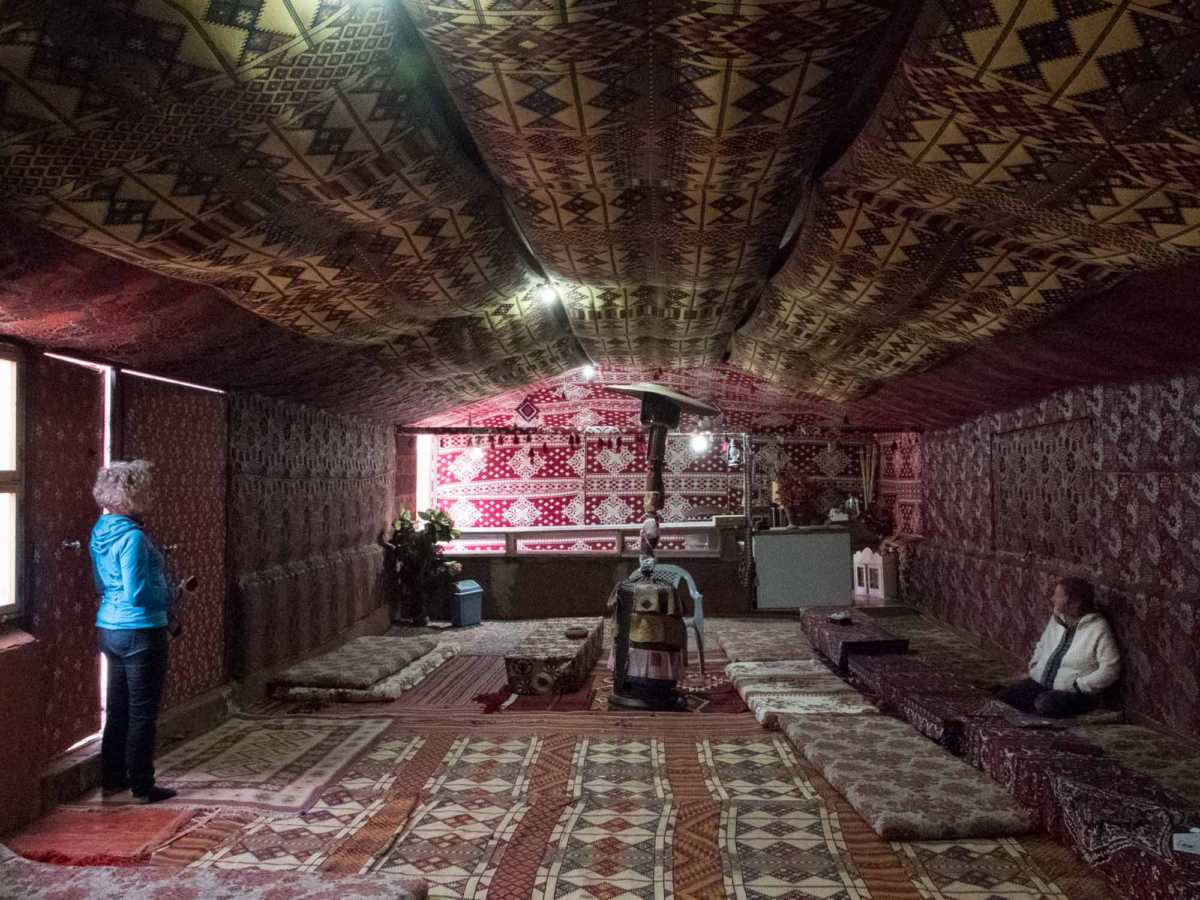
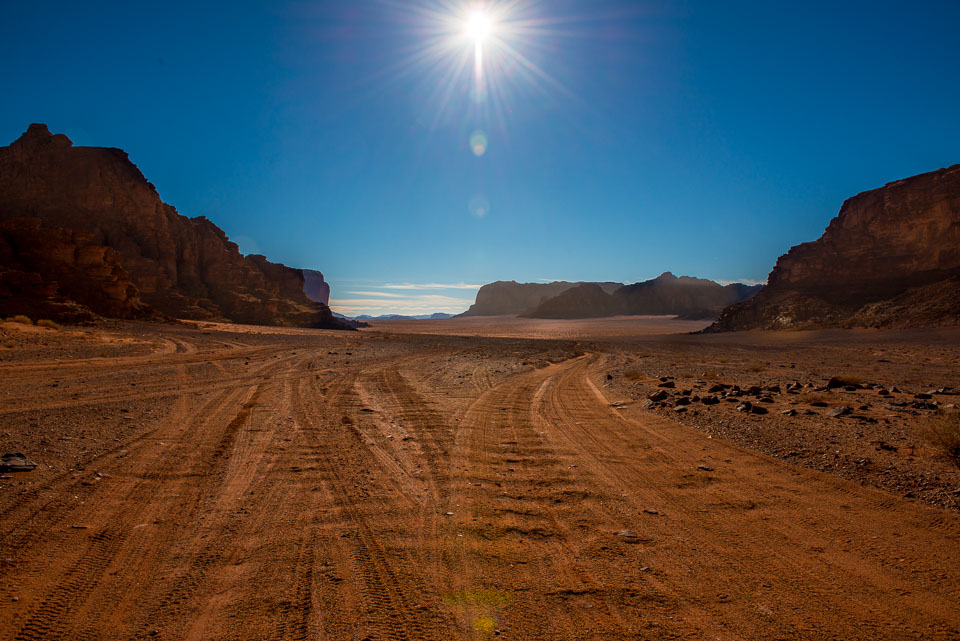
As part of our Wadi Rum visit, we took a three hour guided jeep tour through the Wadi Rum desert. We stopped at many interesting archeological sites in the Unesco World Heritage area. Now I like petroglyphs as much as the next guy, but I'm really a sucker for military history. Especially when that military history involves one of my favorite military (and cinematic) characters of all time: Lawrence of Arabia.
At this spot in Wadi Rum, there was a ruined stone house built against a hill. It's doubtful T. E. Lawrence himself stayed in the building, because he usually slept Bedouin-style in a tent. But the spot of land is well documented as a site of prolonged encampment for Lawrence and his men. The site, in addition to having a natural bulwark of surrounding rock outcroppings, was on a bit of a rise in the otherwise very flat valley. The rise provided him with an extended view to the south west, where his enemies were likely to advance. At any rate, this was Lawrence's vista down the valley over the red sand of Wadi Rum.
I won't go into a history lesson here, but I will encourage you to rent, steal, download or whatever David Lean's spectacular epic film. I don't think it would be saying too much that it is among the 10 best regarded films in movie history. I certainly have it in my top five.
If you are interested in Lawrence, you might also do well to read his own words on his campaigns in Arabia, Seven Pillars of Wisdom.
If you need convincing about reading Lawrence's book, here's the first paragraph. This guy could write.
Some of the evil of my tale may have been inherent in our circumstances. For years we lived anyhow with one another in the naked desert, under the indifferent heaven. By day the hot sun fermented us; and we were dizzied by the beating wind. At night we were stained by dew, and shamed into pettiness by the innumerable silences of stars. We were a self-centered army without parade or gesture, devoted to freedom, the second of man’s creeds, a purpose so ravenous that it devoured all our strength, a hope so transcendent that our earlier ambitions faded in its glare.
